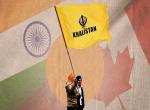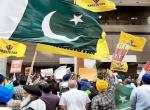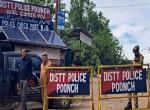Recent bomb blast in Bangalore (17 April 2013) and twin bomb blasts that took place in Hyderabad in February 2013 have reiterated that the phenomenon of urban terrorism has taken firm root in India. In less than a decade, the Indian urban areas like Mumbai, Delhi, Kolkotta, Guwahati, Hyderabad, Bangalore, Jaipur, Varanasi, Pune, Kanpur, Coimbatore, Srinagar, Jammu and Ahmedabad have witnessed over 20 major attacks. There have been large-scale casualties, material damage and disruption of life and economic activity as a result.
The Phenomenon
The phenomenon of urban terrorism is relatively new to India, but it has a long history in the international arena. The Irish Republican Army had fought British forces in Northern Ireland for several decades mostly in urban areas. The Baader-Meinhof gang, a communist urban guerrilla group, was responsible for several acts of terrorism in Germany in the 1960s and 1970s. Most of the terror groups in Latin America are urban-based. Palestinian militants have managed to launch numerous urban terror attacks on Israeli civilians despite Israel’s vigorous pre-emptive measures and a pro-active response strategy. Members of Aum Shinrikyo, a cult group, carried out five coordinated sarin gas attacks on several lines of the Tokyo metro in March 1995. Chechen rebels have been fighting Russia since the 1990s mostly in the urban set-up.
As terrorists are rational in their choice of terrain and targets, evaluating strengths and weaknesses and costs and benefits, urban terrain holds significant advantages. As is the characteristic of urban areas, population is not only high, but also densely concentrated. Unlike in rural areas, inhabitants in cities and towns are more heterogeneous that gives more space for anonymity. It is this posture of anonymity that enables the terrorist fish to swim easily; an excellent place for camouflage. For terrorists, logistical support like arms, medicines, food, and lodging are readily available in an average urban area. Manoeuverability of terrorists is guaranteed by the presence of public and private transportation facilities that are both dependable and unobtrusive. In urban areas, a terrorist group may find it easier to recruit prospective terrorists in a predictable manner, for it is the city that nurtures dissidence in general.
Cities are the nerve centres of any country. It is in urban areas where targets are most varied and abundant: laymen, officials, foreign nationals, corporate heavy weights, government buildings with symbolic/strategic value, bus stands, railway stations, airports, markets, foreign missions, communication centres etc. By attacking high profile symbolic targets, the terrorists wish to make a point that if a government fails to protect high value targets; it is obvious that it may not be in a position to protect the normal ones. As a result, the credibility of the government of the day is undermined. Since the quality and quantity of terrorists’ ‘defined enemy’ is high in cities, the impact of a destructive act is more widespread. This also gives an added advantage to terrorists to prevent any kind of indiscriminate counter-terrorist operation by the state that could maximise collateral damage. For the same reason, use of aerial bombardments against the terrorists becomes difficult. Urban operations for terrorists also often demand less in the way of brute physical strength and endurance than do operations in mountainous or rural terrain. And they do not need sophisticated long-range weapons to inflict desired damage.
Since terrorism is ‘propaganda by the deed’ the attention seeking goal of terrorists is well served in the urban environment where the immediate audience is greatest and where representatives of print and electronic media are readily available and quite eager to report. The media coverage of 9/11 and 26/11 attacks exemplify this. Such coverage also magnifies the fear-generating capabilities of terrorists. If the general population begins to fear, the objective of a terrorist group may have been achieved. Overall, an urban landscape facilitates terrorists in realising their goals: surprise, maximum damage with minimum risk, hyper media attention and subsequent disappearance. As the 26/11 experience has shown, well-armed terrorists are not easy to fight in urban terrain as tall buildings and narrow lanes and alleys provide inherent protection to them and make the security forces easy targets. The presence of hostages further complicates military or police operations. Similarly, IED attacks and suicide bombings are extremely difficult to detect or prevent in time.
Counter-measures
The key to success in fighting urban terrorism lies in obtaining accurate intelligence about impending attacks and the neutralisation of the terrorists before they can launch their planned attacks. Since the threat of urban terrorism is transnational in nature, there is an urgent need for regional and international networking of friendly intelligence agencies. Most importantly, the Central and state intelligence agencies should share information methodically and it must trickle down in real-time to the user. While electronic surveillance, including the interception of communications, is no doubt useful, it is of critical importance to penetrate the networks and sleeper cells of the terrorist organisations so as to gain actionable intelligence.
Since the terrorists usually choose high-profile soft targets, where the presence of ‘defined enemy’ is abundant, they should be put under maximum surveillance and protection. The staff manning these places should be trained in rendering first aid, evacuation techniques, and rescue and relief operations. Surveillance cameras, metal and explosive vapour detectors and X-ray scanning machines should be installed at key access points. Technology to detect and alert for suspicious activity such as loitering by an individual or vehicle should be made use of. Security personnel should be sensitised to spotting and segregating suspicious objects that are left behind.
The success of counter-terrorism operations, especially in the urban domain, depends to a considerable extent on a speedy response by the right force that is trained, armed and equipped suitably for the job at hand. As the National Security Guard is India’s primary strike force for counter-terrorist operations, it must be given the wherewithal to respond swiftly to urban terror attacks to minimise casualties and deny the perpetrators the ability to consolidate. The Central Government’s recent decision to locate NSG echelons in the cities that have been targeted most frequently will enable the force to respond in a swift manner. The NSG, however, must also be equipped with state-of-the-art technology and equipment to enable the commandos to enhance their operational performance and minimise their own casualties. Where necessary, the Indian Army’s elite Special Forces should be employed to counter terrorist attacks in urban areas. Every state, in fact, should have a NSG-type of commando force to counter lethal terror strikes. Rehearsals should be periodically undertaken for search-and-rescue operations after large-scale terrorist strikes. Different contingencies should be simulated and practised. Future training should also cater for tackling terrorist attacks using WMDs.
Without the eyes, ears and intuition of the general public, it is difficult to identify a terrorist who is anonymous and blends seamlessly into the environment in which he is living and operating. An effective battle against terrorism can be waged only by involving members of the public. This includes creating societal awareness to keep a steady eye on tentative or errant behavior in the neighbourhood and sharing of information of suspicious movements with point persons in the police and intelligence agencies. For instance, on every New York City subway train, the message to passengers since the terrorist attacks of 9/11 has been clear: “If you see something, say something.” For this purpose, urban Indians must organise themselves into neighbourhood watch committees through community consensus mechanisms based on genuine concern to prevent future terrorist attacks. All communities should be co-opted in counter-terror measures instead of perceiving some as the “other”. The community of Indian fishermen should keep a constant tab on coastal waters. Awareness creation among people should also include ‘golden rules’ to be followed by the people in case of a terrorist attack. Such familiarisation will not only minimise the lethality of terrorist attacks, but also reduce the consequent panic. In short, unless a comprehensive approach is adopted, involving all stake holders of the society, it is difficult to counter urban terrorism.
Published Date: 22nd April 2013










Post new comment